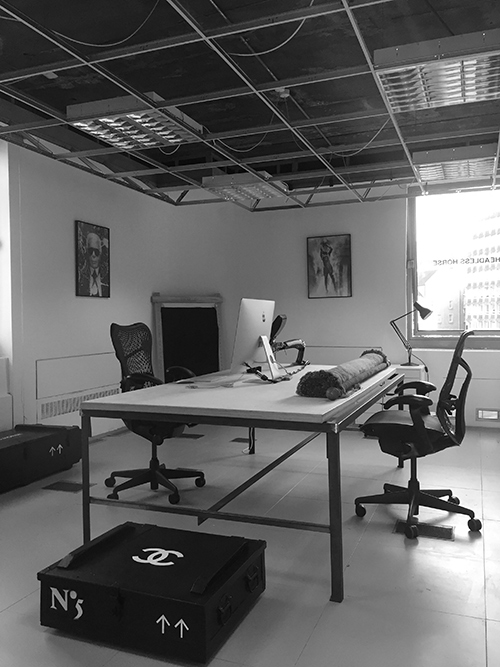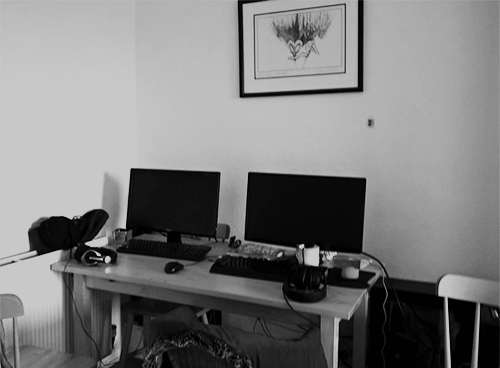Have you ever thought of switching your traditional, office-based work model for a location independent model?
You might worry that changing the way your business works is a huge challenge, especially when you can’t even be sure it will work.
How can you determine if your team working anywhere might be a viable model for your business, while maintaining your current processes and productivity?
The answer is breaking down the substantial task of reorienting your in-office working model into bite-size chunks.
Trialling distributed work first before fully committing is the best way to understand the both the benefits and challenges of the distributed work model.
WHY TRIAL ‘ANYWHERE WORK’?
It’s worth noting that even if, after trialling distributed work, you find that it doesn’t fit your business, then you will still have learned valuable lessons about how your team works together and how your business operates.
Recently, we talked to Aleyda Solis, owner of location independent company Orainti, about the benefits of trying remote work, even on a small scale.
She says that locating your business in one place can actually cover up issues within your organisation. Going remote can make these issues much more evident, which, paradoxically, is a good thing. Understanding is the first step towards improving; distributed work requires you to confront the disfunction in your business.
Aleyda points out that trialling distributed work will give you the opportunity to “sort any issues you have in your company, so that everything functions correctly when moving remote.”
If, after trialling remote work, you find it’s not for you, then, at the very least, you may find that any internal issues that you had before have been resolved.
There’s little downside in trialling a work anywhere model, so we now move on to practicalities of experimenting with a new way of structuring your team’s work.

‘Anywhere’ work space: Aleyda Solis, owner of Orainti
How to trial location independent work:
1) Pick a ‘test’ team
Some people find working Anywhere more of a challenge than others. It takes a different skill-set to work outside a physical office and collaborate virtually with your colleagues.
Therefore, when trialling distributed work, you’ll need to think about how to support your team to develop the skills needed to help them work successfully.
What skills should you help develop? Every company is different, but an effective Anywhere team has these traits:
Strong communication skills
Anywhere workers don’t necessarily have the readily available cushion of social support that comes with going into a busy office every day.
An Anywhere team needs to communicate proactively; reaching out to each other and maintaining the flow of information. The team needs people with strong interpersonal skills.
Why is a culture of sociability so important in distributed teams? Loneliness and isolation can lead to low morale and, consequently, the team’s work will suffer.
If your team members have an effective support network and a healthy work-life balance then they are more likely to switch off and less likely to burnout. A burnt out team is a less productive and less happy one.
Independent, empowered people :
You need independent, self-starters in your Anywhere team. People who don’t need to be micromanaged to get things done, and who are empowered to make decisions.
When working Anywhere, people need to rely on themselves to meet deadlines, not on their bosses breathing down their necks.
Experience of working ‘anywhere’
Those who have more experience will able to guide and inform other members of your Anywhere team.
Trialling remote work could benefit you as it could give you the opportunity to figure out the areas where people need more support in adapting to a new working structure.
Undoubtedly, most people can adapt to distributed work and, with support, can develop the characteristics that make ‘Anywhere work’ a more productive model than traditional office work.

‘Anywhere’ work space: Annie Spratt, Community Manager of Unsplash
2) Institute a phased roll-out of your Anywhere model
START WITH A SMALL TEAM
Becoming truly ‘location independent’ is easier for smaller companies who are able to make substantial changes to their business processes without grinding to a halt. Smaller businesses are more nimble by nature.
However, for larger companies, it’s a bit harder.
Jacob Morgan, an expert on the future of work, suggests that “larger companies take a phased approach to implementing flexible work across the company.”
When trialling remote work, start with a small team and withpeople who will likely find the transition easier.
Why a small team? Larger teams might have to contend with a bigger range of time differences. Larger teams also have to coordinate projects around more people, which is harder.
Additionally, starting with a small team will enable your company to focus on ‘getting everything right’ on a smaller scale before shifting more teams to a distributed working structure.
If all goes well in your small team, start to test remote work with other agile groups in your organisation.
You could always use the original ‘trial team’ to mentor and support those who may not find the transition as easy.
TIME IN THE OFFICE: TWO IN, THREE OUT
We ran a remote-work experiment a few years ago. The experiment was for those who were more comfortable staying in-office throughout the week.
These employees were challenged to working two days in office and three days out of office over a period of a few weeks.
The results? Our team experienced increased concentration, wider collaboration, and higher quality of life.
We liked the results so much that we now have just one in-office day a week.
How could these results apply to your own business? Consider the ‘two in, three out approach’ when trialling remote work with your pilot team.
Taking the leap from being in an office five days a week to being away from an office all week is not easy.
Gradually ease your team into distributed work; from one day of Anywhere work, build up to four or five days.
Listen to your team. Ask them about the challenges at each stage of the your ‘work anywhere’ transition and improve your distributed model accordingly. This way, the transition for the rest of your company will be a lot easier; not every team will have to learn each lesson themselves.

‘Anywhere’ work space: optional co-working space for Unsplash (Montreal, Canada)
3) Trial and refine a remote employee onboarding process
When trialling Anywhere work with your pilot team you need to consider what is needed for a smooth, company-wide transition to remote work.
What information needs to be given to new remoters? What initial processes need to be carried out?
Test your answers to these questions with your pilot team. Identify what went well and what didn’t at the beginning of the remote trial period. Then, refine the onboarding process for team members accordingly.
But what should your ‘Anywhere’ onboarding process look like?
Unfortunately, for distributed teams, not all onboarding processes are the same; one size doesn’t fit all.
For example, web-based hosting service, GitHub “requires all remote employees to spend their first week of work at its headquarters to get a feel for the company’s culture from day one”.
Whereas, Hanno, a digital health design agency, requires its new remote hires to complete a series of tasks. These tasks expose new hires to different areas of the company.
Clearly, onboarding processes are tailored to each organisation, yours will need to be tailored to fit your business.
How will your onboarding process meet the needs of your company?

‘Anywhere’ work space: Creative agency, Headless Horse
4) Give your pilot team an ‘anywhere’ task
If you’re considering going fully remote but aren’t quite sure, then conduct a short experiment.
Give a similar task to a small office-based team and a small remote-based team. Then assess the results for yourself.
Stanford University professor, Nicholas Bloom studied the benefits that a Chinese call centre observed when they trialled remote work:
“…they allowed one portion of their workforce to work from home for 9 months. The productivity of those working from home increased 13.5% compared to the in-office group”.

‘Anywhere’ work space: Brendan Megannety of Explorer’s Press
5) Trial having a small company ‘meeting place’
For some remote companies, not having a company hub or a co-working space can be detrimental. This is because your working space can portray your identity.
Recently, we interviewed the CEO of Headless Horse, a creative agency. He highlighted that having an office can be beneficial as it allows clients to come and see a home-base that is “reflective of the brand”.
Additionally, he points out that having a ‘company hub’ allows employees to feel as though they have a place that they could go to- to socialise and to collaborate.
“It’s a base. If one person were travelling or based in America, then so be it. It would be nice to have somewhere to come home to visit…It’s good to bounce off ideas in person.
Moreover, Taylor Coil, the marketing manager for remote company, Tortuga Backpacks, suggests that having a company ‘base’ can allow employees to feel happier and ‘rooted’. Shes says:
“When you don’t truly feel like you have a home, you can feel a bit listless in life. [When I was travelling and working].. it felt very much felt like I was drifting and I didn’t want to feel that way. I wanted to feel rooted in some kind of routine, I suppose.”
Having a company ‘base’ is not a new concept.
Royalty free photo platform, Unsplash, apply this approach. Their community manager, Annie Spratt explains:
“Just over half of the team work in Montreal [office] and although they all tend to work there, they come and go at times to suit them…I like that unless you are meeting someone, there is never that expectation to be in the office”
Clearly, there are remote companies that benefit from having collaborative hubs as they make for a happier and more productive workforce.
When trialling Anywhere work, try testing the use of a small ‘hub’ space with your pilot team. Identify whether, on this smaller scale, it benefits your pilot team before committing to going fully distributed.

‘Anywhere’ work space: Hideout Bali
6) Seek feedback
The key to success when working Anywhere is communication.
Over-communicate.
Listen to your employees.
What are the challenges of distributed work? What is your team struggling with? What could be improved?
Listen and continually refine your remote work model, so when you do go fully remote, you’ve already developed a clear set of principles and processes.

‘Anywhere’ work space: Taylor Coil, Marketing Manager of Tortuga Backpacks
7) Give feedback
When trialling remote work, practice giving feedback to your pilot team.
Suzannah Weiss, a freelance writer who works Anywhere, highlights the need to gain frequent feedback from those she is liaising with.
She mainly communicates mainly via messaging platforms. This, she says, can make it hard to judge how happy her clients are:
“I can’t rely on facial expressions or body language or tone of voice to tell me which way a conversation is about to go”.
Another potential downside of communicating when working remotely is that it can be hard to gauge the intent of messages that you send.
Gretchen Spreitzer, from University of Michigan’s Ross School of Business, points out that “words in an email or a text can sometimes be misinterpreted due to the brevity of the words”.
While office-based workers can read visual cues and are able to get in-person feedback, distributed workers can find themselves getting increasingly anxious over the ambiguity of online messages.
This anxiety can manifest itself as imposter syndrome in remote work, where imposters feel chronic self-doubt over their work performance.
In a 2017 United Nations report “41 percent of remote workers report high-stress levels, compared to just 25 percent of office workers”.
Undoubtedly, the more stressed employees are, the more unhappy they are. And the more unhappy they are, the more unproductive they are.
Use your time trialling remote work to practice giving frequent visual, video-based feedback to your pilot team to avoid this negative cycle.
You must develop management processes to ease the anxieties of your pilot team, and then your whole business.

‘Anywhere’ work space: Sam Maggs of Gig Buddies
8) Trial communication frequency
“How much communication is necessary to get work done in a remote company?”
This is a question you should be asking yourself when trialling Anywhere work with your pilot team.
Not communicating enough can result in a workforce which is misaligned; not just around team projects but around the goals of the company.
This lack of communication can also result in employees feeling isolated and unproductive.
When trialling remote work, test how much communication is needed on a daily basis within your pilot team.
This way, when your company does go fully remote, there are guidelines in place to prevent employee isolation and to ensure that team members are aware of peer activity.
Typical communication guidelines might include the following:
- Give at least two work updates a day, so people now what you’re working on
- Carry out at least two video calls a day, to stay in touch with colleagues and, perhaps, meet new people
What will your communication baselines be?

‘Anywhere’ work space: Hideout Bali
9) Start to build a positive Anywhere work culture
This can be done by:
A) Testing the logistics of company retreats
Company retreats are often integral parts of any remote company.
Many distributed employees don’t see each other very often. Company retreats provide them with the opportunity to connect and to build relationships with one another, in-person.
But how do retreats build positive work cultures within Anywhere companies?
Automattic, the company behind WordPress, “built a positive company culture by using the money they save on office space to pay for employees to travel and meet each other”.
Undoubtedly, retreats also show that companies value the contribution and the needs of their staff. This is why they’re so effective in building positive remote work cultures.
You need to consider how you will foster an effective, supportive, and meaningful culture in your company when people might not see each other every day.
Use your trial period to test the logistics of how company retreats would work on a small scale (i.e. with your pilot team). What works and what doesn’t? This way, there will be less hassle when scaling events to include larger team retreats.
B) Trialling informal communication
Sending emails may be the norm for traditional, office-based companies but if you are considering switching to an Anywhere model of work, sending emails can hold you back.
Why? Sending emails can be a disjointed, slow and overly-formal process. What’s the alternative? Informal, instant messaging.
Modern instant messaging (IM) apps, like AnywhereWorks, enable real-time communication. This saves time and increases staff productivity.
The CEO of Headless Horse, who works flexibly, agrees:
“We don’t even use email anymore. I like the flexibility and freedom of just sending a text to my employees…I like the freedom I like that there’s not that [email] hierarchy of ‘kind regards’. That formality gets in the way of creating stuff.”
Instant collaboration platforms can also build a positive remote work culture by creating a sense of unity and equality by eliminating the email-hierarchy that comes with traditional salutations and formal sign-offs.
Consider testing work messaging platforms during your trial period and assess how instant messaging effects work culture.

‘Anywhere’ work space: Brendan Megannety, Explorer’s Press
10) Trial tools that work for your team
In the traditional office environment, face-to-face interaction and the occasional email will usually provide employees with the means to get work done.
This isn’t an option when working Anywhere. Your team have to heavily rely on virtual communication methods to communicate and to complete tasks.
Your company could trial remote work and could pick the ‘right’ team for Anywhere working but it won’t survive the transition to remote work unless you have the right supportive tools in place.
If you are unsure of what tools you need when working virtually, here are some suggestions:
– Google Drive: Google Drive allows team members to share and collaborate on documents together.
– Trello: Trello is a project management-based system.
–AnywhereWorks: AnywhereWorks is a team-collaboration platform.
–AnywhereTools: AnywhereTools is a collection of virtual tools that will help your team work remotely.
–WorldTimeBuddy: WorldTimeBuddy keeps track of the time differences between your distributed employees so that you can organise meetings with ease.
–YoCoBoard : YocoBoard is time tracking software that logs the hours that you and your team work.
–CloudApp: CloudApp allows you to share videos, screenshots and images with others.

‘Anywhere’ work space: Annie Spratt, Community Manager of Unsplash
11) Trial coordinating video-calls
Coordinating video calls can be tricky when your pilot team is spread across the world, and even trickier when your whole company has shifted to Anywhere work.
Use your trial period as an opportunity to make the video-call process more efficient before going fully remote.
Here, are a couple of potential strategies for making video-calls stress free:
Strategy A) If your pilot team is large, split it into smaller agile groups for video calls
Annie Spratt, Community Manager for Unsplash, has discussed the challenges of coordinating video calls:
“I know that in the past when we had huge team meetings, we would have people in 6 different time zones. This would mean that there would always be one person joining the video call at 1 am in the morning.
”In the end, her company resolved this issue by splitting the whole company team into smaller, agile ‘video-call’ groups. This way, the company found that time-zones clashed less:
“Now, as we have grown, we have split down into smaller teams with 2 or 3 people, which makes video calls a lot easier.”
Strategy B) Share the burden of 24/7
To make cross-continental communication fair, LI company and global furniture provider Steelcase came up with a strategy of “sharing the burden of 24/7 across the team
This strategy involved creating a rotating meeting schedule for the team.
Donna Flynn, a Director at Steelcase, explains that “every month, each team member has one evening, one mid-day, and one early morning meeting, and misses one meeting that falls in the middle of their night.”
The rotating schedule is a useful option to consider in a fully distributed team as it prevents the same team members from repeatedly taking video calls in the middle of the night.
Consider the strategies above when trialling Anywhere work. Figure out what works best when reconfiguring your work processes to navigate the new world of flexible working.

Key Takeaways
By trialling remote work and by thinking through the steps outlined in this article, you will discover where you need to work on creating processes to facilitate Anywhere work.
A key consideration is your business culture. You will struggle to go fully distributed without a culture of transparency and sociability and the tools to achieve open communication flows.
Appropriate tools are essential for communication and collaboration across time zones and different locations.
> Find out more about the different virtual tools for remote work<
Summary
1) Pick a ‘trial’ team with remote characteristics
2) Phase the process. Slowly.
3) Trial/refine a remote employee onboarding process
4) Give your pilot team an ‘anywhere’ task
5) Trial having a (small) company ‘meeting place’
6) Seek feedback
7) Practice giving lots of visual-based (video) feedback
8) Trial communication frequency
9) Start to build a positive Anywhere work culture
10) Trial tools that work for your team
11) Trial coordinating video calls
Interested in going anywhere?
Get advice straight to your inbox:


